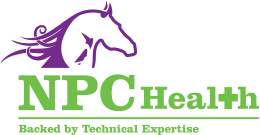Chaste tree berry for horses
How does Chaste tree Berry work?
-
Potential mode of action of Chaste tree Berry for horses
- The active compounds: Chaste tree berry contains diterpenes, which are believed to interact with dopamine D2 receptors in the anterior pituitary gland. This interaction can inhibit the secretion of prolactin, a hormone that, when elevated, can disrupt the balance of estrogen and progesterone
- The effect of reducing prolactin levels: may help restore the hormonal balance between estrogen and progesterone. Therefore, may help conditions like premenstrual syndrome (PMS) and certain reproductive issues.
- Progesterone Support: Chaste tree berry may promote progesterone production by influencing the LH hormone release, supporting the luteal phase of mare cycling.
-
- Estrogen Modulation: having an effect on the hypothalamic-pituitary-gonadal axis, may mean chaste tree berry can help normalize estrogen levels, assisting hormonal balance.
How Chaste tree berry may support your horse – 3 exciting potential benefits
-
Reduce mare moods Clinical studies show chaste tree berry extracts can significantly alleviate PMS symptoms (in humans) compared to the placebo, with some studies showing it to be as effective as alternative drugs. Many horse owners who feed their horses chaste berry report improvement in mood and behaviour during oestrous cycles when supplemented on a daily basis (with chaste tree berry).
-
Normalise hormones Chaste tree berry has been found to reduce elevated prolactin levels (in humans), which may help normalize menstrual cycles and improve fertility.
- Equine Cushing’s Disease (PPID) Chaste tree berry is considered a natural alternative to medications like pergolide for horses. A holistic approach may be beneficial to help manage some milder symptoms of PPID. While some anecdotal reports suggest improvements in coat condition and energy levels, it should not be used to replace serious PPID symptoms such as laminitis. Chasteberry supplementation did not reduce ACTH levels, a key marker of PPID. But horses owners do report improvement in some of the minor symptoms related to PPID which may support equine wellness.
-
🧪 Study findings for Chaste tree berry in Cushing’s disease
-
1. Dr. Eleanor Kellon’s Field Trial (1999)
An 11-month observational study involving 10 horses with early-stage PPID demonstrated improvements in study: ecirhorse.org+1newrider.com+1-
Coat shedding
-
Energy levels
-
Activity
-
Possible reduction in laminitis discomfort, study: ecirhorse.org+1newrider.com+1newrider.comforum.chronofhorse.com
As the study progressed into Autumn, horses that exhibited more advanced PPID showed a return of clinical signs. The study concluded that while chasteberry might offer symptomatic relief in mild cases, it is not a substitute for pergolide in advanced stages, study: soundadvice.shop+1ecirhorse.org+1ecirhorse.org+1soundadvice.shop+1
2. University of Pennsylvania’s New Bolton Center Study (2002)
This study compared chaste tree berry extract to pergolide in horses with advanced PPID. Findings showed chasteberry did not effectively control ACTH levels or improve clinical signs in advanced cases of PPID. Therefore, suggesting limited efficacy in advanced cases, study: ecirhorse.org+1drkhorsesense.wordpress.com+13. UK Laminitis Trust Study (2001–2004)
A 12-month trial observed symptomatic relief, such as improved coat condition and energy levels, in horses treated with chasteberry. However, there was no consistent control of ACTH levels, indicating that while symptoms may improve, the underlying disease progression might continue, study: ecirhorse.orgConclusion for Chaste Tree Berry use in Cushing’s Disease for horses
Chaste tree berry shows improvement in symptom relief in horses with early-stage PPID, improving aspects like coat shedding, energy levels and helping improve mood. However, it does not improve ACTH levels that marker for Cushing’s disease in horses. Veterinary consultation and careful monitoring are essential when considering chaste tree berry as part of a PPID management plan, study: ecirhorse.org
-
Conclusion for the use of Chaste Tree berry in horses
While chaste tree berry has a well-documented role in managing certain hormonal disorders in humans, its use in horses still requires further research. Equine applications are largely based on anecdotal reports and traditional herbal medicine. However, a number of studies have been done to show it may help improve symptoms and therefore support the wellbeing in your horse.
It is essential to consult with a veterinarian for conditions like PPID where established treatments are available. However, as a natural herbal remedy it may provide supportive care in the management of mare health during cycling which may improve behaviour. It may also improve coat shedding, energy levels and improve mood particularly for depressed horses and ponies in the early stages of Cushing’s disease.
NPC Health offers a high-quality chaste tree berry supplement as a natural herbal remedy for horses, click here for more information: Chaste Berry for horses pure | Top-quality
